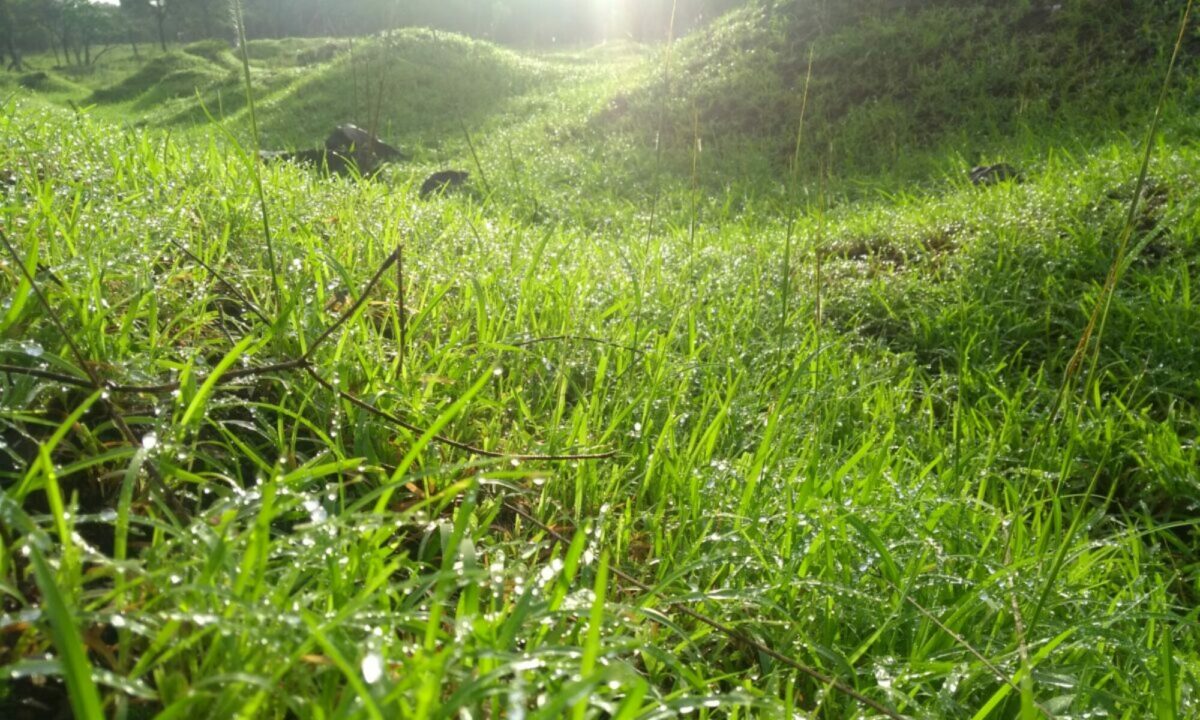Any guesses? That’s right, at a cashew factory!
The cashew tree is Anacardium occidentale that belongs to the Anacardiaceae (Mango) family. Its fruit is an accessory fruit (or false fruit) that has a pear shaped structure called cashew apple and at its end is a kidney shaped drupe. The drupe contains one seed which is the cashew. The apple is used to make Feni and the drupe is processed to make the cashews we know.
There was a pile of drupes at the Kamat Cashew Factory at Sawantwadi. They were creamy yellow coloured and the shell was quite hard to touch. The proprietor was enthusiastic and gladly guided us through his establishment with a running explanation.
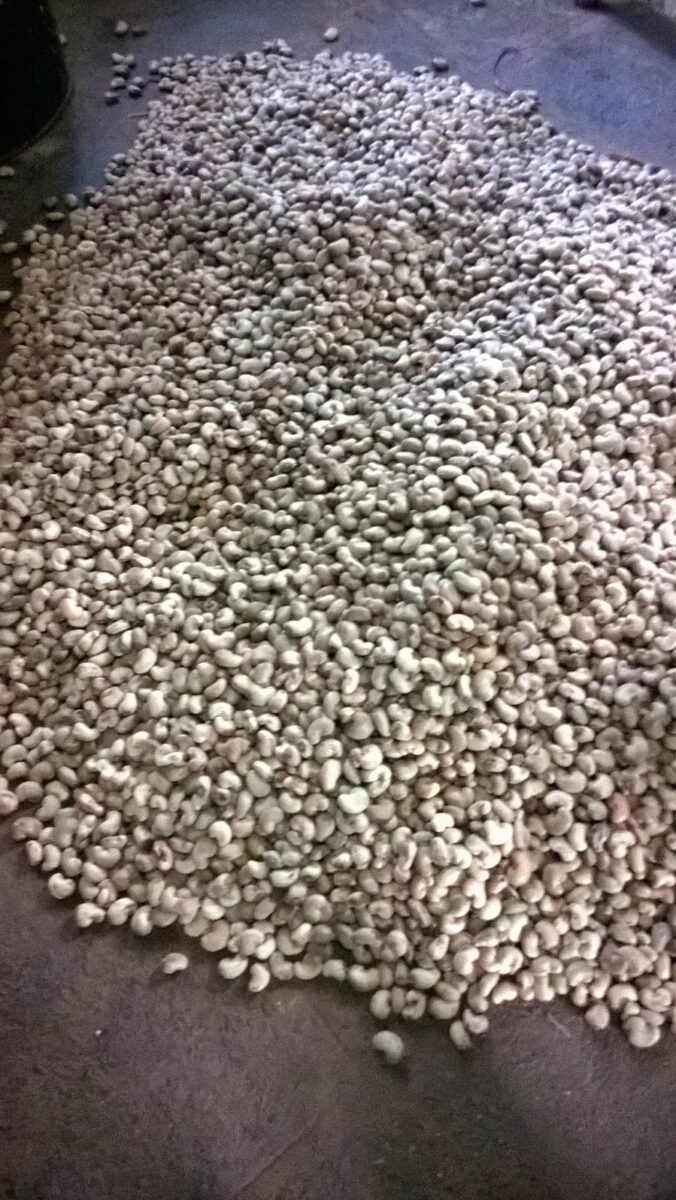
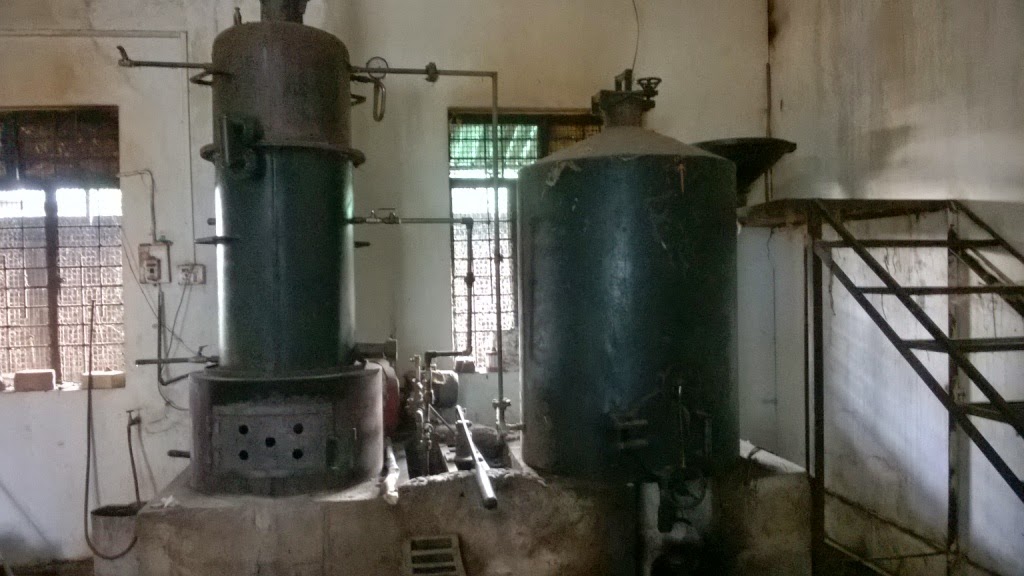 |
| First roasting |
So does one simply break open the shell to get the nuts? No.. Far from it. These drupes undergo their first roasting over steam to mark the start of processing.
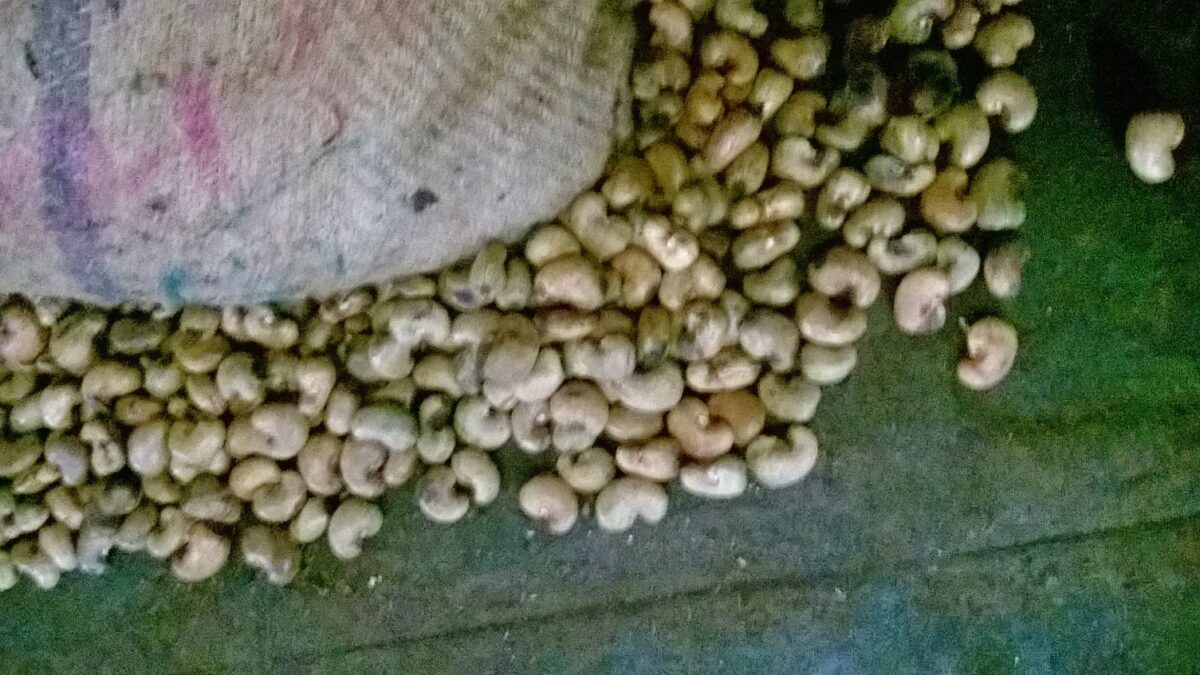 |
| Following first roasting |
The drupes are put into special machines that cut open the hard outer shell. Earlier, the cutting was done manually which did horrible things to the hands of the ladies doing this delicate job. The machine we saw, picked up one drupe at a time, split the cover and the broken cover and kernel were ejected out. This shell has toxic substances (which cause terrible reactions when in contact with skin) and our guide cautioned us against touching them.
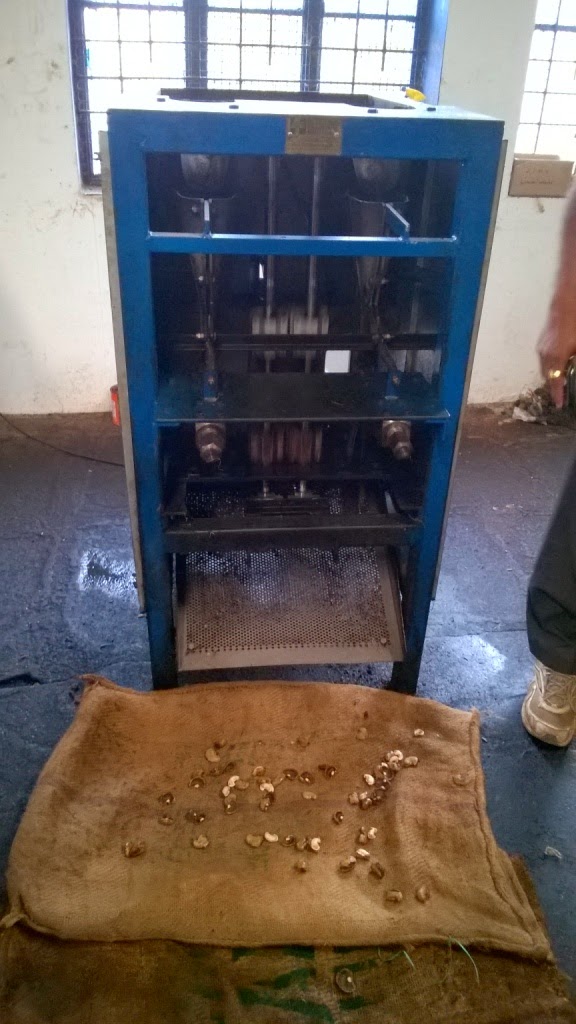 |
| Machine to cut the shell open |
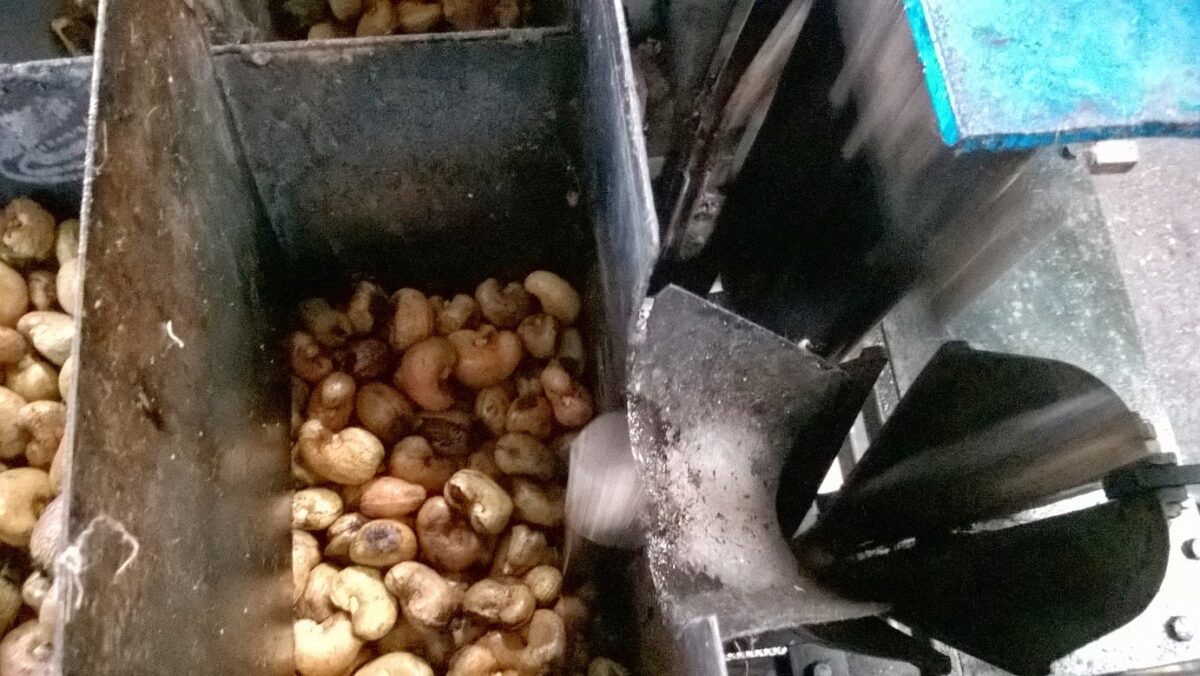 |
| The machine ‘ingests’ and cuts one drupe at a time |
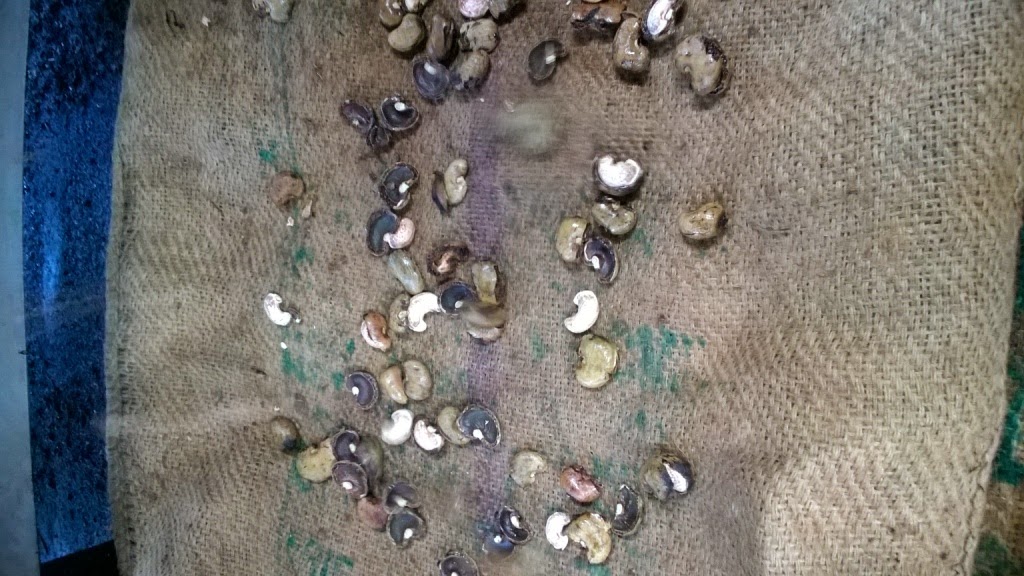 |
| Shells and kernels |
Shells are
sold to paint making companies and the kernels are roasted for a second
time. The resultant product is covered in a dry thin brown skin which may be
removed by further processing. Some kernels are sold with these brown
skins itself.
The kernels are now ready for sorting. This process is done by skilled hands and eyes that segregate the nuts based on their size and colour. I witnessed one lady who sat at a ‘console’ (see image below) and went about deftly throwing cashews in separate containers without even looking up from the pile in front of her.
What Aim! There was no scope for mistakes.
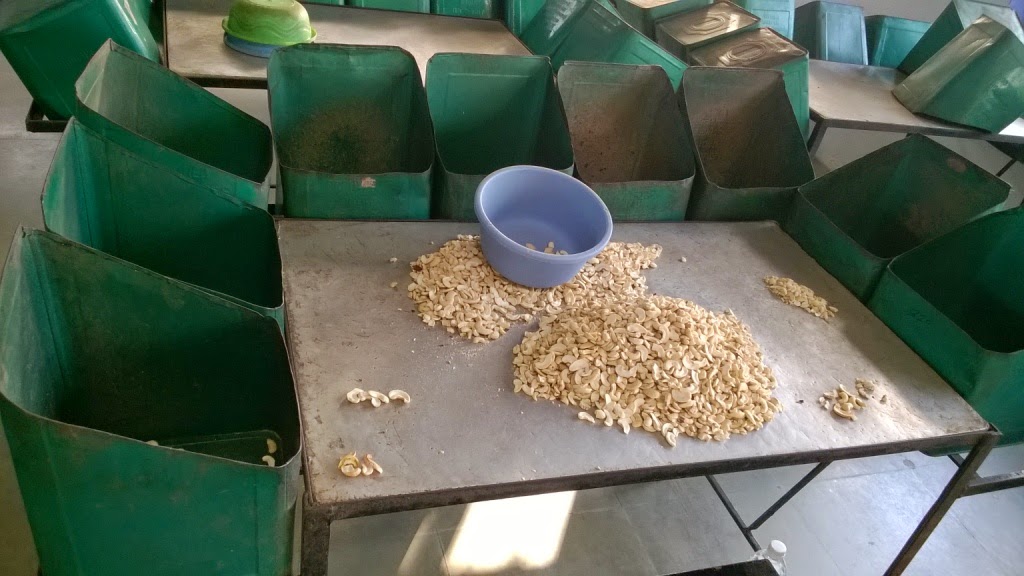 |
| The kernels on the table are put into the tins around it based on their size, shape |
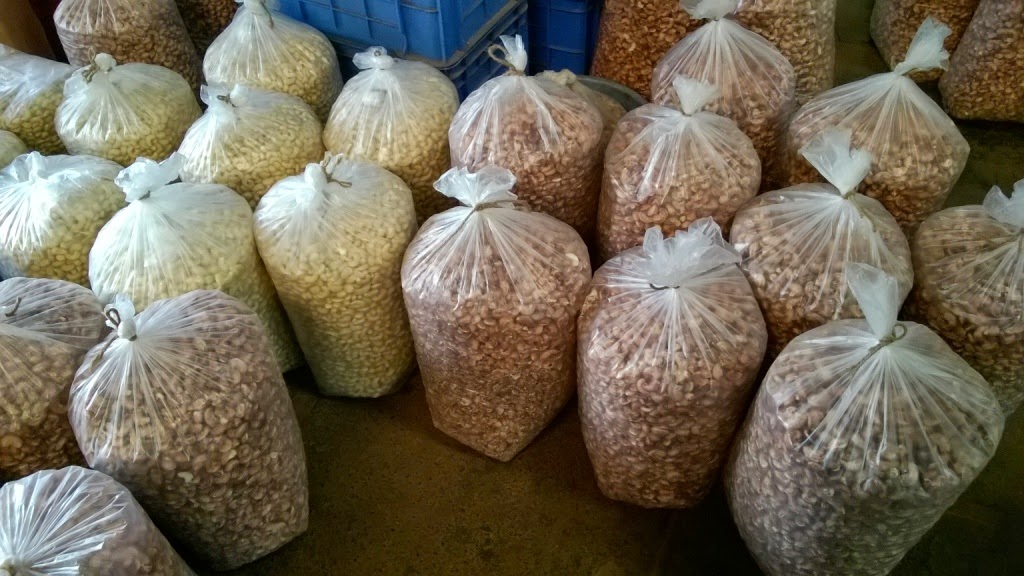 |
| Separated and Packed |
Grading cashew kernels is important as the bigger ones are priced higher. The broken pieces are sold as such and are ideal for adding to cakes or sauces. At a cashew shop one finds them graded asW150, W180. W210, W240 and so on. W refers to whole (B will stand for broken; S for split etc) and the digits are number of kernels per pound. So W150 means there would be 150 kernels per pound. There is a category called SW which means Scorched Wholes where the kernels are scorched or marginally darkened due to excessive roasting. Here is a link with some info about cashew grades.
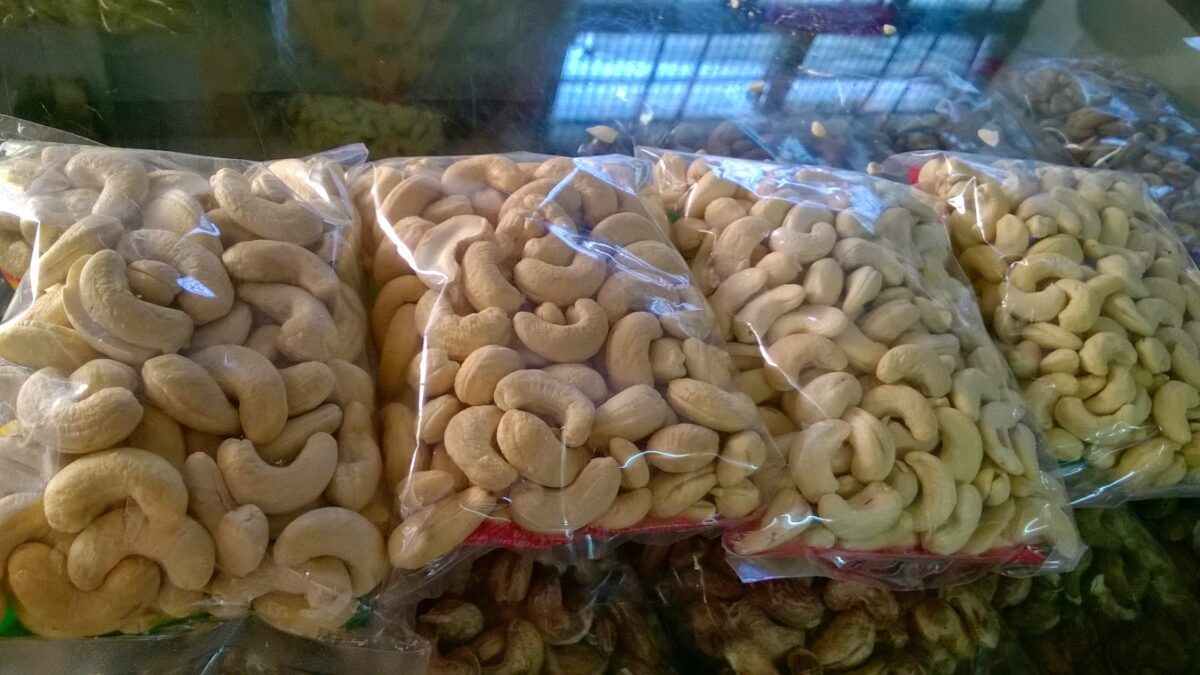 |
| At the sales counter |
The entire process may take a week or more. I was told that despite widespread cultivation of cashews in the coastal regions, many factories process nuts imported from South America (they are cheaper despite travelling across the oceans) compared to the local produce. Ironic isn’t it?
Other factories may have different processing methods but the general idea is to dry, crack open the drupes, roast and then segregate them. Some are further processed into salted cashews or flavoured with other spices.
Here another two images from the factory.
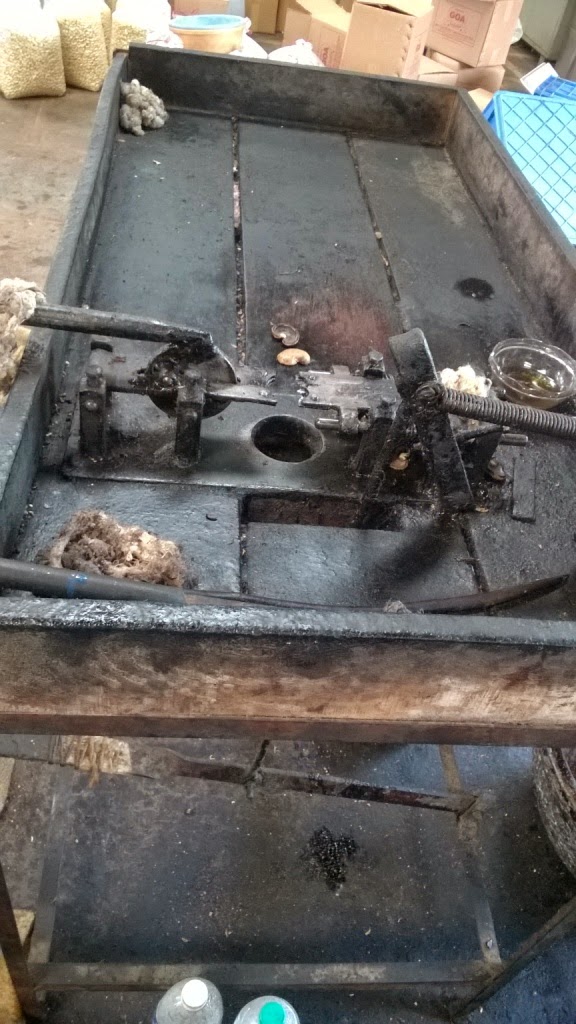 |
| An old manual shell cutting machine |
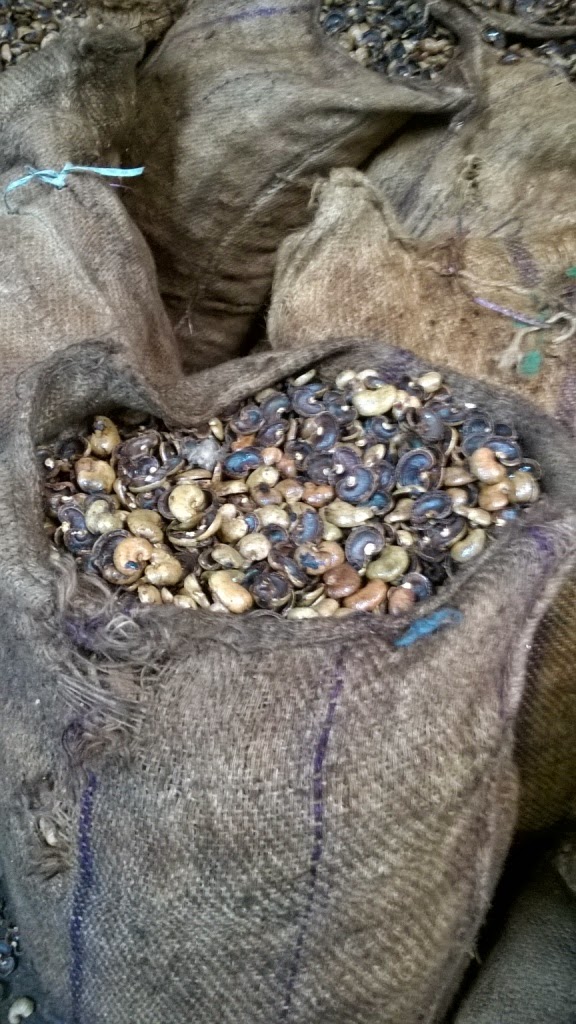 |
| Packed discarded cashew shells ready to be sent to paint makers |
Point to note: There are several cashew factories in Goa but not all welcome visitors. We took a chance with this one and got lucky.
Even at this stage in life, I have learnt something new. Learning never ends… We just need to have an open and curious mind…
Ciao folks!
